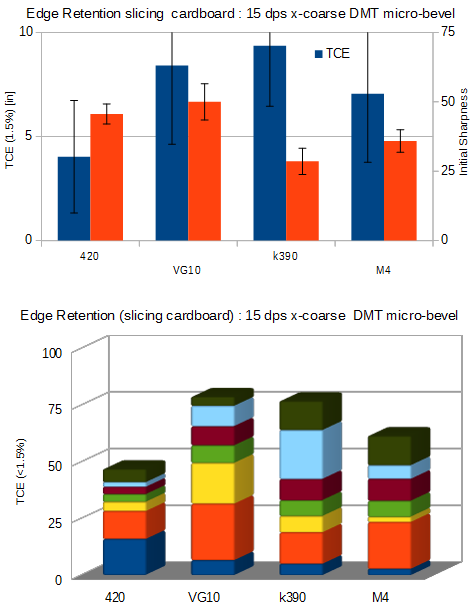Did some testing not all that long ago comparing the low vs high temperature tempering, that's using the same steel in knives with the same geometry within .001".The Mastiff wrote:I've thought on this subject for a few years now. When I really get into it I begin to think how not just different steels but each steel with different heat treats and final hardness's will give different results. Cliff you have used the example of 154cm and the high and ....not as high heats (relative) before. The use of cryo to help reduce the retained Austenite and increase wear resistance but lose toughness. There are so many variables that it would take quite a while to get through testing one steel with so many variables. Even plain carbon steels can be pretty complicated. Getting into some of the highly alloyed steels makes my tires spin when I begin thinking about it.
I've heard 3V described as the perfect steel for knives. I can't say I agree with that but it is a good example to use when talking about toughness and edge retention. The toughness can vary a pretty large amount with just a few hardness points.
Anyway, it's beyond me pretty much but it is an interesting subject. It effects wear resistance a great deal when you can keep the steel together at very thin edges. Comparing a Phil Wilson blade of Cruwear the way he does it compared to a ( excellent as far as production knives go) production blade.
Joe
The interesting thing was that with the low temperature blade that was supposed to be tougher from the so called latest fad I will call it had more issues. That's chipping, edge deformation, poor edge retention.
While the high temperature blade had nothing more than normal edge wear, held an edge for one heck of a lot longer in the 30% range or so.
And that's just cutting rope.
That's just one steel, I tested 3 different steels and got the same results for the most part, give or take.
So yes the HT protocol does matter a great deal from my own testing.
It was interesting, while not conclusive I don't think only because I didn't have the blade checked for grain structure etc.
If I get another one I plan on sending it off to get checked, that's cut and checked out by the steel company.
